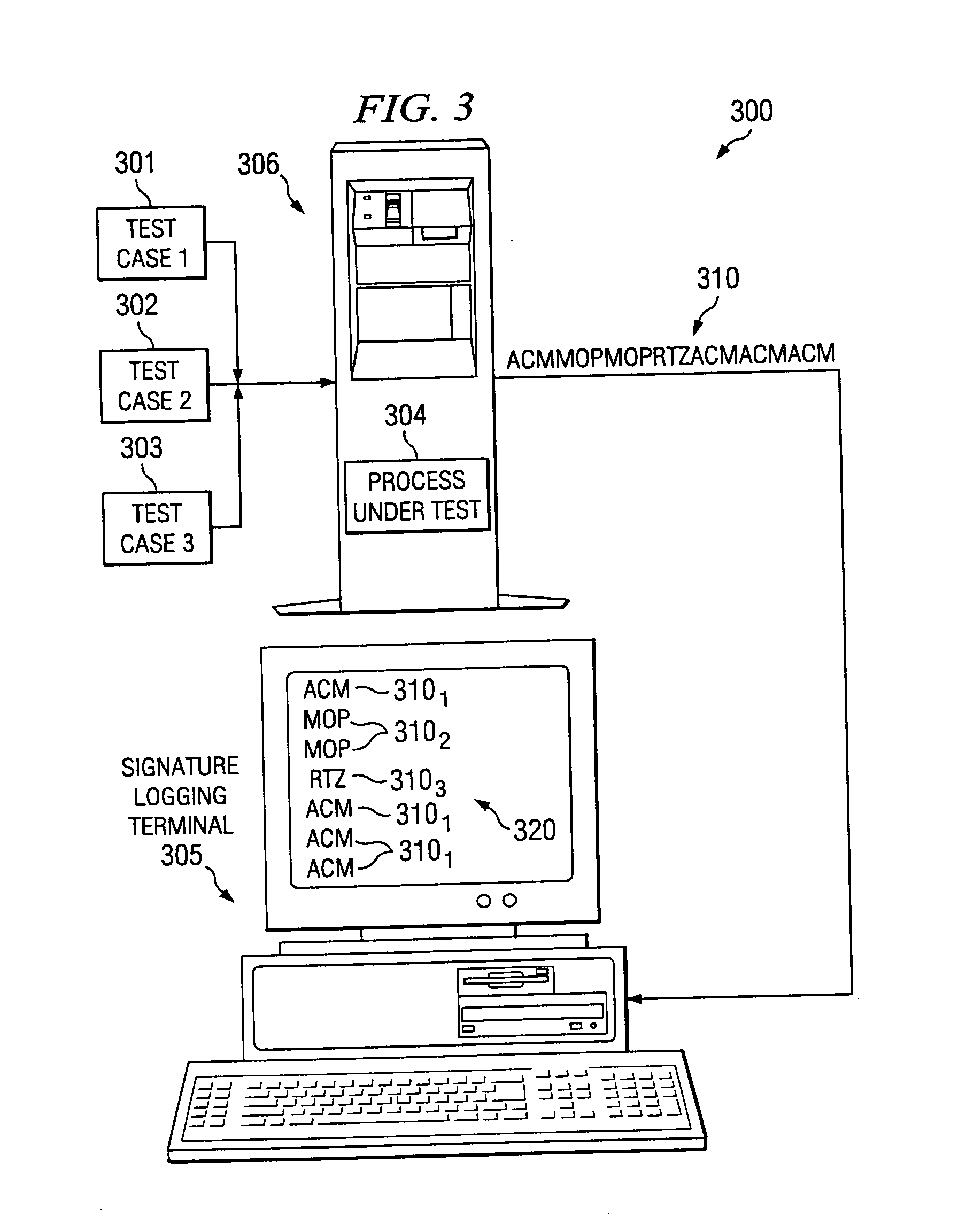Systems and methods for software and firmware testing using checkpoint signatures
- Summary
- Abstract
- Description
- Claims
- Application Information
AI Technical Summary
Problems solved by technology
Method used
Image
Examples
Embodiment Construction
[0017] The present invention provides systems and methods for developing and using software and firmware testing checkpoint signatures. FIG. 1 is a flow chart of an embodiment of a method 100 for providing a checkpoint signature. In accordance with the present invention, code is instrumented to output checkpoints or some internal designations, such as numbers, that are individually unique, at selected points throughout the executing binary, at 101. According to embodiments of the present invention, only one place in the code actually outputs a specific designation such as a number. As code executes at 102 and these checkpoints are reached, these numbers or other designations are produced in a stream at 103. In other words, the first checkpoint to be reached sends out a first number or designation, and a second checkpoint sends out the second number or designation and so on. Thusly, the code generates a unique signature, or map, of the software that may be externally captured at 104 ...
PUM
 Login to View More
Login to View More Abstract
Description
Claims
Application Information
 Login to View More
Login to View More - R&D
- Intellectual Property
- Life Sciences
- Materials
- Tech Scout
- Unparalleled Data Quality
- Higher Quality Content
- 60% Fewer Hallucinations
Browse by: Latest US Patents, China's latest patents, Technical Efficacy Thesaurus, Application Domain, Technology Topic, Popular Technical Reports.
© 2025 PatSnap. All rights reserved.Legal|Privacy policy|Modern Slavery Act Transparency Statement|Sitemap|About US| Contact US: help@patsnap.com



